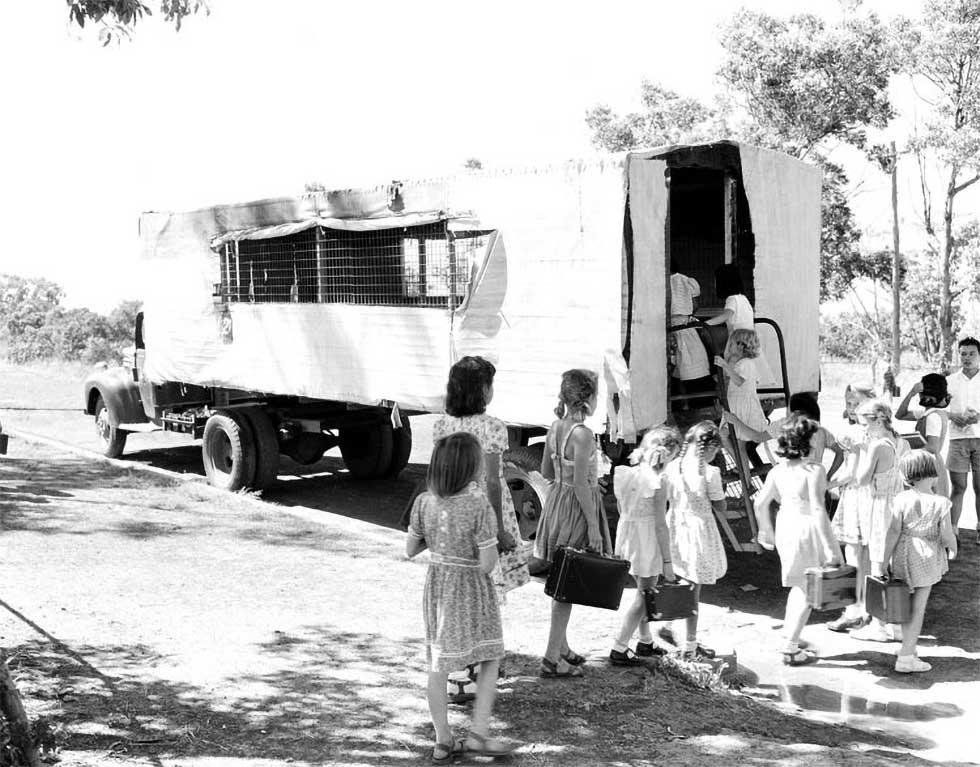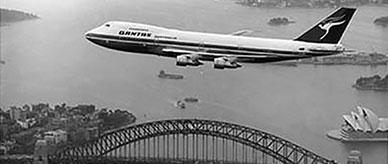


About this record
This is a black-and-white photograph of primary school girls boarding a school bus in Darwin supervised by a young man who is probably a teacher. The bus appears to be a converted cattle truck and is parked on a street in front of a bush background.
Educational value
This photograph:
- Shows the type of heavy-duty transport vehicles required in the Northern Territory in the 1950s – Darwin has a tropical climate with two seasons, wet and dry, and many of the dirt roads would have been impassable in the wet season using conventional transport.
- Shows multiple-use vehicles in the 1950s at the beginning of a pastoral and minerals boom in the Northern Territory – this vehicle was probably used for other purposes when not required to transport school children.
- Indicates the role of school buses in enabling children to access education; every child's right to education and the importance of education for the development of Australia were highly valued and the school bus network was boosted in the 1950s.
- Demonstrates the creative use of available materials to suit the required purpose – the tray of the truck has a canvas cover with side flaps; this provided shade while enabling air to move through the area in which the children were sitting or standing.
- Provides examples of clothing worn by schoolgirls in the 1950s in Darwin – cotton dresses that had short sleeves, a straight bodice and gathered skirt; footwear is sandals or short socks and shoes.
- Shows hairstyles of schoolgirls in the 1950s – shoulder length hair sometimes worn in pony tails or plaits, or short bobs.
- Provides examples of school bags of the 1950s – small rectangular cases.
Acknowledgments
Learning resource text © Education Services Australia Limited and the National Archives of Australia 2010.
Need help with your research?
Learn how to interpret primary sources, use our collection and more.

